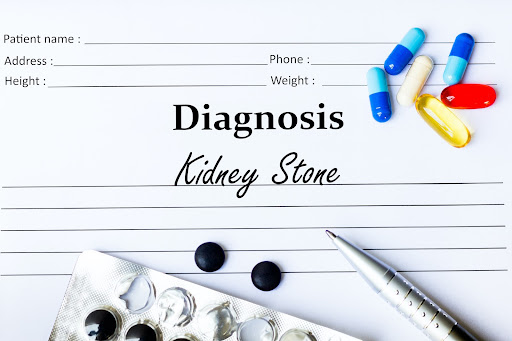While the name may sound scary, percutaneous kidney stone removal is simply the surgical removal of kidney stones (also called renal stones) by creating a passageway from the skin on the back to the kidney. Percutaneous means “through the skin”. It is a safe and effective procedure for removing large or multiple kidney stones that can’t pass through the urinary tract on their own.
Kidney stones are not an uncommon health issue. They are slightly more common among men than women. The risk of kidney stones is about 11% in men and 9% in women. Usually, the stone will move through the urinary tract and pass out of the body in the urine. Larger stones do not always pass on their own and sometimes require medication to help speed passage or surgery to remove them.
Kidney Stones that Require Surgery
Large kidney stones are stones that measure approximately 5 mm or larger. Because of their size, they cannot easily move through the narrow urinary tract out of the body. Complex kidney stones usually refer to staghorn stones, multiple stones, or those associated with anatomical or functional abnormalities. Staghorn stones are large stones that take up more than one branch of the collecting system in the renal pelvis of the kidney. The name refers to the shape of the stone, which has branches like the antlers on a deer or a piece of coral. The way that these stone branches grow can block the pelvis and the calyces of the kidney. This can lead to kidney failure. Percutaneous kidney stone removal is preferred for these kinds of kidney stones.
Symptoms of Kidney Stones
A kidney stone may stay in the kidney or travel down the urinary tract into the ureter. Smaller stones move out of the body in the urine without causing too much pain. But larger stones may cause a back-up of urine in the kidney, ureter, bladder, or urethra resulting in painful symptoms. Here are the signs to look for:
- A constant need to urinate
- Pain during urination
- Sharp pains in your back, side, lower abdomen, or groin
- Blood in your urine
- “Gravel” or small stones in the urine
- Inability to urinate or can only urinate a small amount
- Cloudy looking urine
- Foul smell to urine
These symptoms may indicate kidney stone(s) or a more serious condition, so be sure to see a healthcare professional right away if you have any of these symptoms. Many times, kidney stones become lodged causing severe pain. The pain may be brief, last for a long time, or may come and go in waves. Along with pain, you may have a combination of fever, chills, nausea, or vomiting. Pain caused by a kidney stone may change, for instance, it may move to a different location or increase in intensity as the stone moves through the urinary tract.
Causes of Kidney Stones
Kidney stones are caused by high levels of calcium, oxalate, and phosphorus in the urine. If the amount of urine a patient produces each day is low, these substances form crystals that gradually increase in size creating a kidney stone. Not drinking enough water, not enough (or sometimes too much) exercise, obesity, weight loss surgery, or eating food with too much salt or sugar are all possible causes of kidney stones. Infections and family history may also be attributed to kidney stones in some people. Certain diseases including gout, diabetes, and Crohn’s disease, can contribute to an increased risk of developing kidney stones as well.
Types of Kidney Stones
There are four main types of kidney stones:
- Calcium oxalate: This is the most common type. It is created when calcium combines with oxalate in the urine. Calcium can combine with other substances to form stones including calcium phosphate.
- Uric acid: Another common type of kidney stone that tends to run in families. Foods high in purines (organ meats and shellfish) can contribute to uric acid stones. High purine intake leads to a higher production of monosodium urate, which can form stones in the kidneys.
- Struvite: These stones are caused by infections in the upper urinary tract and are less common than calcium oxalate and uric acid kidney stones. They grow fast, can become large, and are more common among women.
- Cystine: These are the rarest type of kidney stones and tend to be hereditary. They are typically larger and commonly reoccur.
What to Expect with Percutaneous Kidney Stone Removal
Percutaneous nephrolithotomy is a safe and common procedure for removing large, complex, or multiple kidney stones. The procedure has proven very effective in the management of kidney stones with low complication rates. The surgery usually lasts one to three hours with a typical hospital stay of one to two nights. Patients can resume normal activities in one to two weeks.

